For the 2025 school year, there are 2 public middle schools serving 107 students in Stanley County School District 57-1. This district's average middle testing ranking is 2/10, which is in the bottom 50% of public middle schools in South Dakota.
Public Middle Schools in Stanley County School District 57-1 have an average math proficiency score of 29% (versus the South Dakota public middle school average of 39%), and reading proficiency score of 38% (versus the 49% statewide average).
Minority enrollment is 22% of the student body (majority American Indian), which is less than the South Dakota public middle school average of 42% (majority American Indian).
Overview
This School District
This State (SD)
# Schools
4 Schools
297 Schools
# Students
418 Students
40,141 Students
# Teachers
34 Teachers
2,999 Teachers
Student : Teacher Ratio
12:1
12:1
District Rank
Stanley County School District 57-1, which is ranked within the bottom 50% of all 146 school districts in South Dakota (based off of combined math and reading proficiency testing data) for the 2021-2022 school year.
The school district's graduation rate of 70-79% has decreased from 80% over five school years.
Overall District Rank
#67 out of 148 school districts
(Top 50%)
(Top 50%)
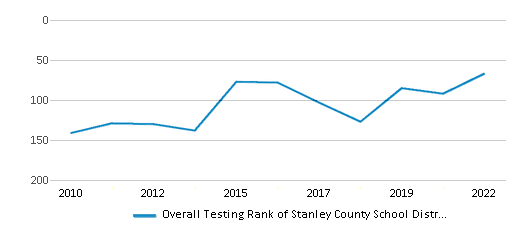
Math Test Scores (% Proficient)
43%
42%
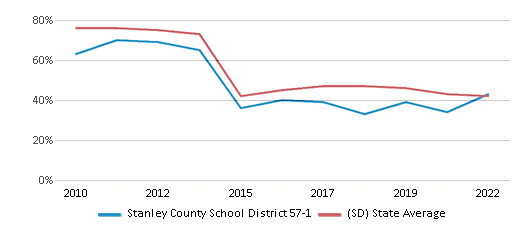
Reading/Language Arts Test Scores (% Proficient)
52%
51%
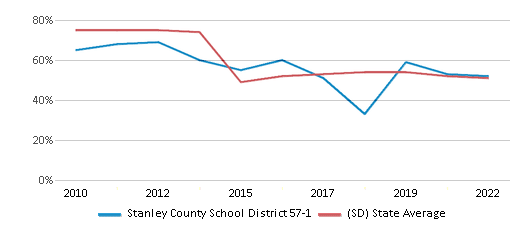
Science Test Scores (% Proficient)
45-49%
42%
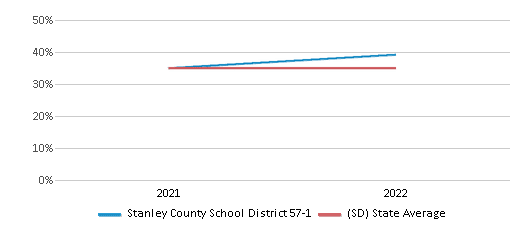
Graduation Rate
70-79%
82%
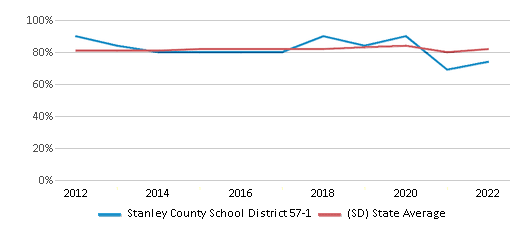
Students by Ethnicity:
Diversity Score
0.36
0.59
# American Indian Students
43 Students
10,455 Students
% American Indian Students
10%
26%
# Asian Students
1 Student
519 Students
% Asian Students
n/a
1%
# Hispanic Students
12 Students
2,703 Students
% Hispanic Students
3%
7%
# Black Students
1 Student
1,024 Students
% Black Students
n/a
3%
# White Students
332 Students
23,358 Students
% White Students
80%
58%
# Hawaiian Students
n/a
46 Students
% Hawaiian Students
n/a
n/a
# Two or more races Students
29 Students
2,036 Students
% of Two or more races Students
7%
5%
Students by Grade:
# Students in PK Grade:
-
174
# Students in K Grade:
39
896
# Students in 1st Grade:
34
903
# Students in 2nd Grade:
32
918
# Students in 3rd Grade:
26
750
# Students in 4th Grade:
24
793
# Students in 5th Grade:
28
1,598
# Students in 6th Grade:
33
9,664
# Students in 7th Grade:
31
11,058
# Students in 8th Grade:
37
11,237
# Students in 9th Grade:
34
674
# Students in 10th Grade:
31
578
# Students in 11th Grade:
41
481
# Students in 12th Grade:
28
417
# Ungraded Students:
-
-
District Revenue and Spending
The revenue/student of $18,574 is higher than the state median of $13,121. The school district revenue/student has stayed relatively flat over four school years.
The school district's spending/student of $13,811 is higher than the state median of $12,623. The school district spending/student has stayed relatively flat over four school years.
Total Revenue
$8 MM
$1,916 MM
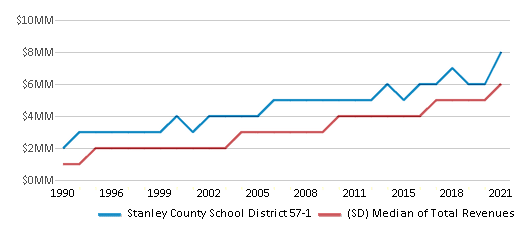
Spending
$6 MM
$1,844 MM
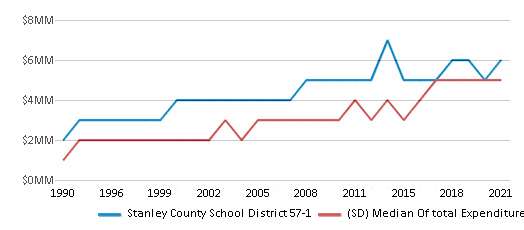
Revenue / Student
$18,574
$13,121

Spending / Student
$13,811
$12,623
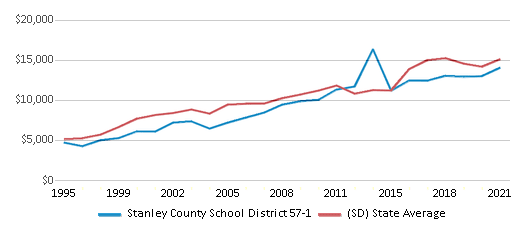
Best Stanley County School District 57-1 Public Middle Schools (2025)
School
(Math and Reading Proficiency)
(Math and Reading Proficiency)
Location
Grades
Students
Rank: #11.
Cheyenne Elementary - 06
(Math: ≥50% | Reading: ≥50%)
Rank:
Rank:
8/
Top 30%10
24882 196th St
Fort Pierre, SD 57532
(605) 223-7745
Fort Pierre, SD 57532
(605) 223-7745
Grades: K-8
| 10 students
Rank: #22.
Stanley County Middle School - 02
(Math: 25-29% | Reading: 35-39%)
Rank:
Rank:
2/
Bottom 50%10
10 E Main Ave
Fort Pierre, SD 57532
(605) 223-7743
Fort Pierre, SD 57532
(605) 223-7743
Grades: 6-8
| 97 students
Recent Articles

Year-Round Or Traditional Schedule?
Which is more appropriate for your child? A year-round attendance schedule or traditional schedule? We look at the pros and cons.

Why You Should Encourage Your Child to Join a Sports Team
Participating in team sports has a great many benefits for children, there is no doubt. In this article you will learn what those benefits are.

White Students are Now the Minority in U.S. Public Schools
Increasing birth rates among immigrant families from Asia and Central and South America, combined with lower birth rates among white families, means that for the first time in history, public school students in the United States are majority-minority. This shift in demographics poses difficulties for schools as they work to accommodate children of varying language abilities and socio-economic backgrounds.





